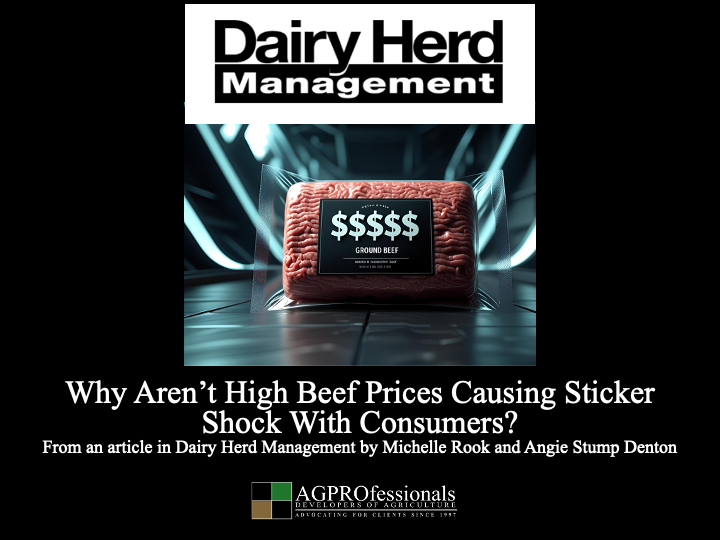Gound beef prices across the U.S. continue to reach new highs. Retail prices for ground beef hit its highest level in history in June climbing above $6 per pound, while steaks were up 8% at $11.49 per pound.
“The record high retail beef price reported by the most recent Consumer Price Index (CPI) has prompted a lot of calls about why prices are record high and whether there is any relief in sight,” says David Anderson, Texas A&M Extension economist for livestock and food product marketing. “While we often write about the great cattle prices for producers who are selling, there is a flip side, and that is consumers who are buying beef.”
Anderson explains reduced slaughter and beef production, especially in the second quarter of the year, cut supplies just as grilling season heated up for seasonal beef demand. The combination led to a spike in wholesale prices and retail beef prices.
Don Close, Terrain senior animal protein analyst, says: “What we have seen so far is consumers have been incredibly loyal to protein collectively, but they have been especially loyal to beef, and beef is actually continuing to gain market there, even at the current prices at the expense of the other protein.”
Wages Are Keeping Pace With Beef Prices
Close says when he correlates the monthly all fresh beef price to hourly wages he found they are in lock step.
“Yes, beef prices have escalated, but beef prices have not risen any faster than the improvement in overall hourly wage,” he explains. “So from the consumer’s perspective, their share of their paycheck committed to beef is essentially the same as it’s been on a comparative basis for years.”
Other contributing factors to beef demand include consumers’ craze for protein and the impact of GLP-1 diets on protein consumption.
Scott Varilek, Kooima Kooima Varilek, says: “I think beef demand has just proven time and time again — hey, consumers want it. It’s a great healthy protein, and I think it’s got a lot of good traction here over the last year of being a good quality source of food.”
High Quality Attracts Consumer Spending
Plus, with 82% to 84% of the beef produced grading Choice or better, the high quality of beef is pushing demand.
“I don’t see any weakness really in the consumers or their spending habits,” says Mike Minor, professional ag marketing. “We actually are eating more Prime meat today than Choice for the first time ever. So, people like their expensive meat still.”
How Long Will High Cattle and Beef Prices Last?
Last week USDA reported average fed cash cattle prices hit the second-highest level in history at $237.78, up 57¢ from the average the prior week.
The high cattle and beef prices continue to be driven by tight cattle numbers, the Mexican border closing due to New World screwworm and looming import challenges.
Yet, Close says the role of strong demand can’t be ignored and is likely to continue.
“I think it’s certainly through 2026 and really more realistic somewhere deep into 2027,” he adds.
Anderson explains normal seasonal production and demand would suggest prices falling from recent highs. Evidence from the wholesale beef market over the last couple of weeks indicates lower prices.
“Seasonal price patterns would suggest that there is a chance for a little bit of relief from record high beef prices,” Anderson says. “But, only if we compare to the peak price this summer. Wholesale beef prices are already declining.”
He adds there is a time lag from lower wholesale prices showing up at retail, but lower wholesale prices combined with normal seasonality of various cut prices should lead to the expectation of falling prices in the coming months.
“But, it’s not likely that prices will decline below year-ago levels,” Anderson emphasizes.
Inventory Reports Release on July 25
Close says more will be known about supply levels after the USDA Cattle on Feed and Cattle Inventory reports on Friday.
“While market analysts expect lower placements, marketings and cattle in feedyards than a year ago, the really interesting number will be the number of heifers on feed on July 1,” Anderson summarizes. “The heifers on feed will provide some insight into heifer retention. Also, look for placements in Texas due to the ban on Mexican feeder cattle. The lack of spayed heifers coming from Mexico is important in evaluating the number of heifers on feed.”

